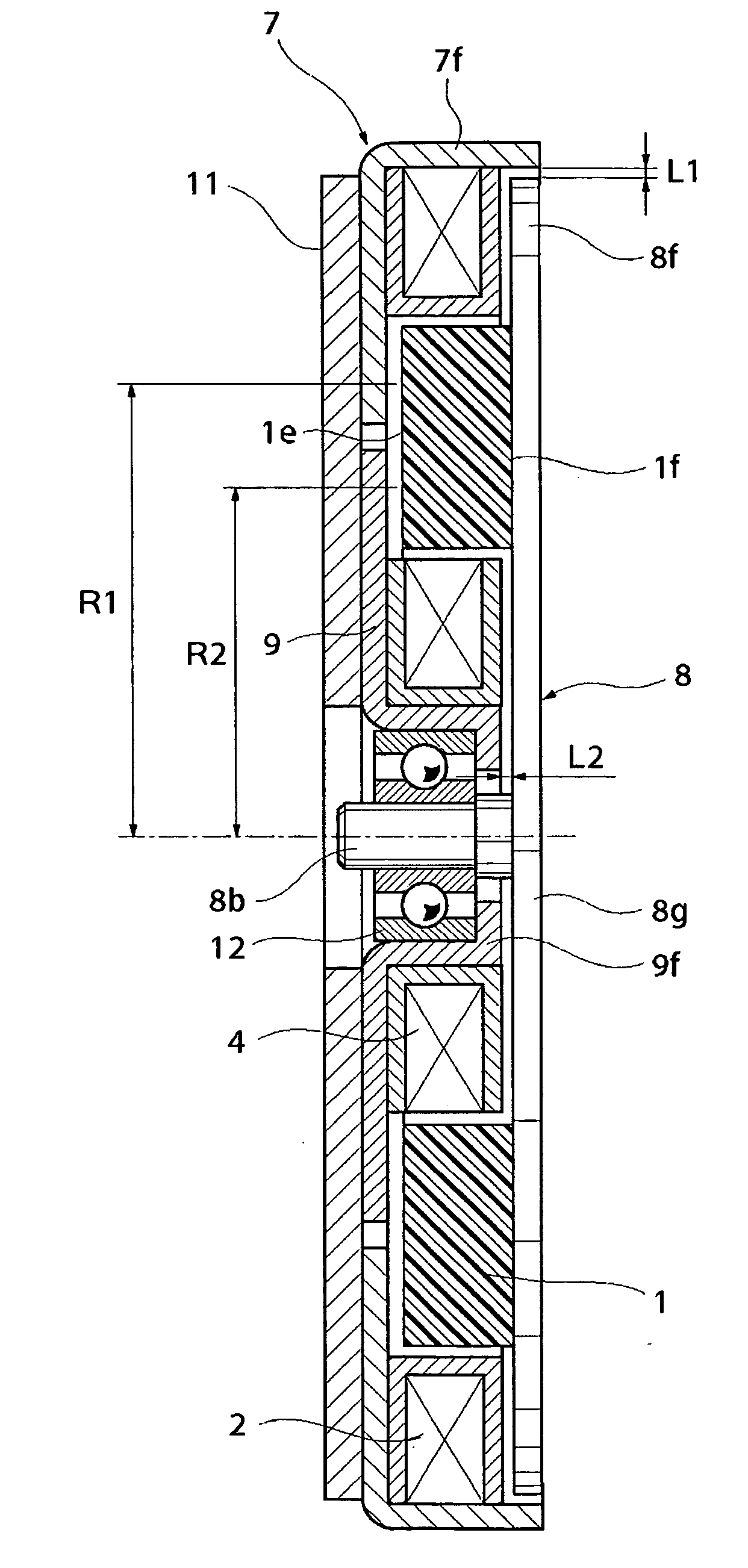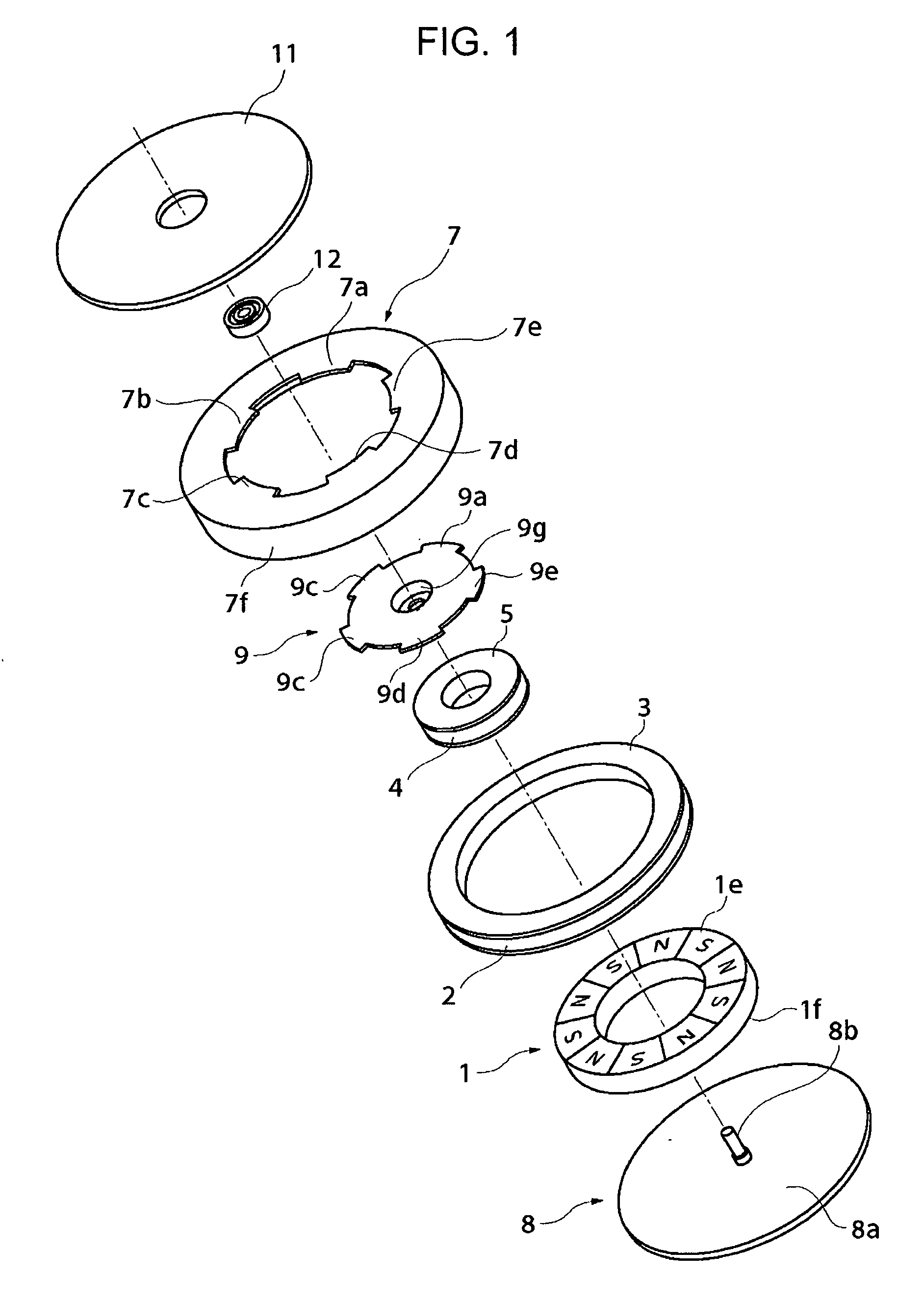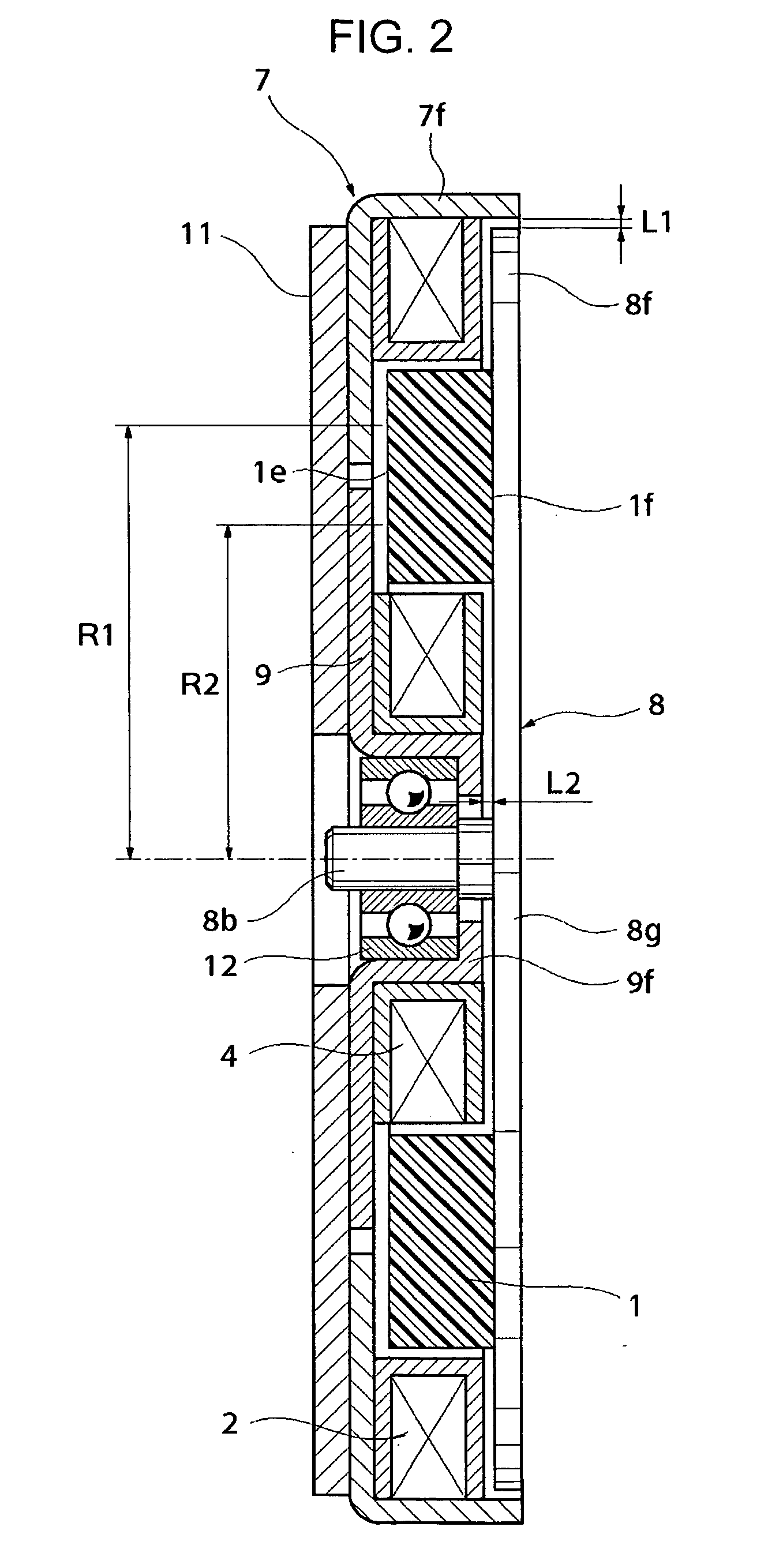Driving device
a technology of stepping motors and driving shafts, which is applied in the direction of magnetic bodies, magnetic circuit shapes/forms/constructions, instruments, etc., can solve the problems of low output power of stepping motors, large outer dimensions of motors, and large outer dimensions of motors, and achieve low-cost, easy-to-assemble driving, and high output. , the effect of small torque loss due to friction
- Summary
- Abstract
- Description
- Claims
- Application Information
AI Technical Summary
Benefits of technology
Problems solved by technology
Method used
Image
Examples
first embodiment
[0057]FIG. 1 is an exploded perspective view illustrating the configuration of a stepping motor serving as a driving device according to a first embodiment of the present invention. FIG. 2 is a cross-sectional view illustrating the internal configuration in the shaft direction in an assembled state of the stepping motor. FIGS. 3 through 6 are diagrams for describing the rotational action of a magnet in this embodiment.
[0058] In FIGS. 1 through 6, the stepping motor includes a magnet 1, a first coil 2, a first bobbin 3, a second coil 4, a second bobbin 5, a first yoke 7, a rotating yoke 8, a second yoke 9, a base 11, and a shaft bearing 12.
[0059] The magnet 1 is formed in a flat annular or toric shape, comprising first and second flat surfaces orthogonal to a center virtual shaft (i.e. an axis of rotation), an outer circumferential surface, and an inner circumferential surface, and also is retained with the virtual shaft serving as the rotational center so as to be rotated. Also, a...
second embodiment
[0102] The second embodiment of the present invention is different from the above first embodiment in that when citing an actuator serving as a driving device for example, the actuator has the configuration shown in FIGS. 7 and 8. With the present embodiment, the components appended with the same reference numerals as the above first embodiment (FIGS. 1 and 2) are the same as those in FIGS. 1 and 2, so the description thereof will be simplified or omitted.
[0103]FIG. 7 is an exploded perspective view illustrating the configuration of an actuator serving as a driving device according to the present embodiment, and FIG. 8 is a cross-sectional view illustrating the internal configuration in the shaft direction in an assembled state of the actuator. FIG. 9 and FIG. 10 are diagrams for describing the rotational action of a magnet. FIG. 11 is a diagram illustrating the relation between the force and rotational phase generated at the magnet.
[0104] In FIGS. 7 through 11, the actuator is fo...
third embodiment
[0148] The third embodiment of the present invention is different from the above first embodiment in that when citing an actuator serving as a driving device for example, the actuator has the configuration shown in FIGS. 12 and 13. With the present embodiment, the components appended with the same reference numerals as the above first embodiment (FIGS. 1 and 2) are the same as those in FIGS. 1 and 2, so the description thereof will be simplified or omitted.
[0149]FIG. 12 is an exploded perspective view illustrating the configuration of an actuator serving as a driving device according to the present embodiment, and FIG. 13 is a cross-sectional view illustrating the internal configuration in the shaft direction in an assembly completion state of the actuator. FIGS. 14 and 15 are diagrams for describing the rotational action of a magnet.
[0150] In FIGS. 12 through 15, the actuator is for reciprocating by disposing a coil on the inside diameter side of a magnet, and comprises a magnet ...
PUM
| Property | Measurement | Unit |
|---|---|---|
| bending strength | aaaaa | aaaaa |
| bending strength | aaaaa | aaaaa |
| polarities | aaaaa | aaaaa |
Abstract
Description
Claims
Application Information
 Login to View More
Login to View More - R&D
- Intellectual Property
- Life Sciences
- Materials
- Tech Scout
- Unparalleled Data Quality
- Higher Quality Content
- 60% Fewer Hallucinations
Browse by: Latest US Patents, China's latest patents, Technical Efficacy Thesaurus, Application Domain, Technology Topic, Popular Technical Reports.
© 2025 PatSnap. All rights reserved.Legal|Privacy policy|Modern Slavery Act Transparency Statement|Sitemap|About US| Contact US: help@patsnap.com



